The Kerala sun beats down mercilessly in April, but the heat can’t stop the festive spirit of the season!
It’s a time to give thanks for all the crops that have been harvested and to celebrate new beginnings. Kerala’s Vishu is a famous example, but it’s just the tip of the iceberg.
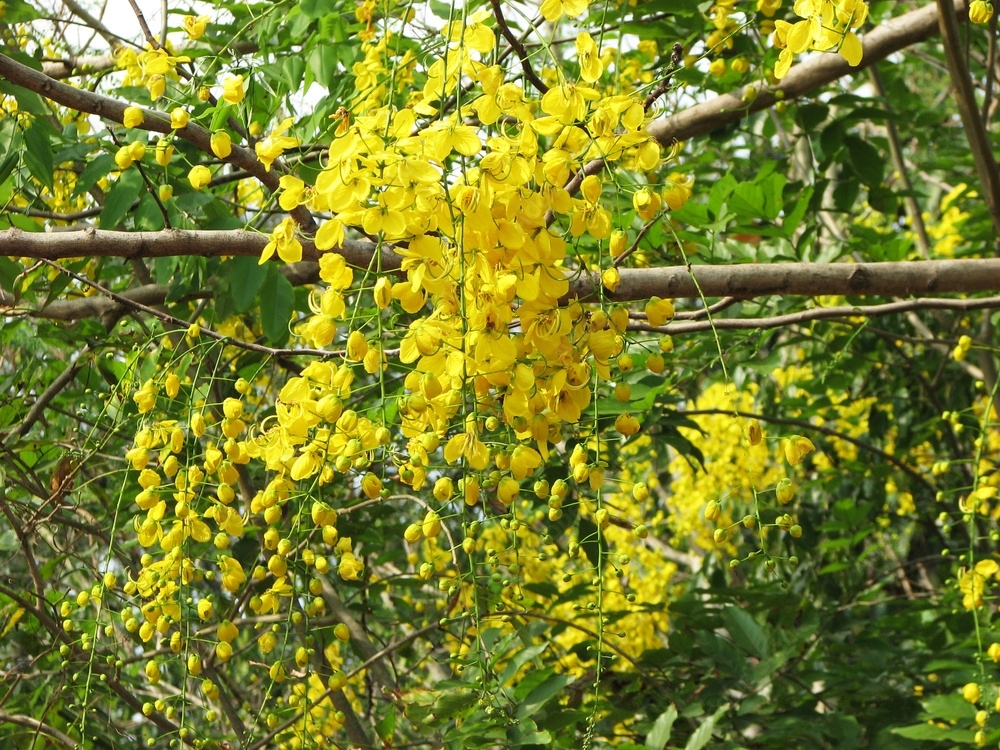
Across the country and even over in Southeast Asia, April becomes a whirlwind of exciting celebrations, each one unique but all sharing a sense of fresh starts and community spirit.
Get ready to dive into the heart of Vishu and explore the other incredible spring festivals of India that bloom alongside it on this special day!
Vishu: A Celebration of Blessings and Beginnings
As the sun rises over Kerala, it’s time for Vishu, a vibrant celebration marking not just a new year but the joyous culmination of the harvest season.
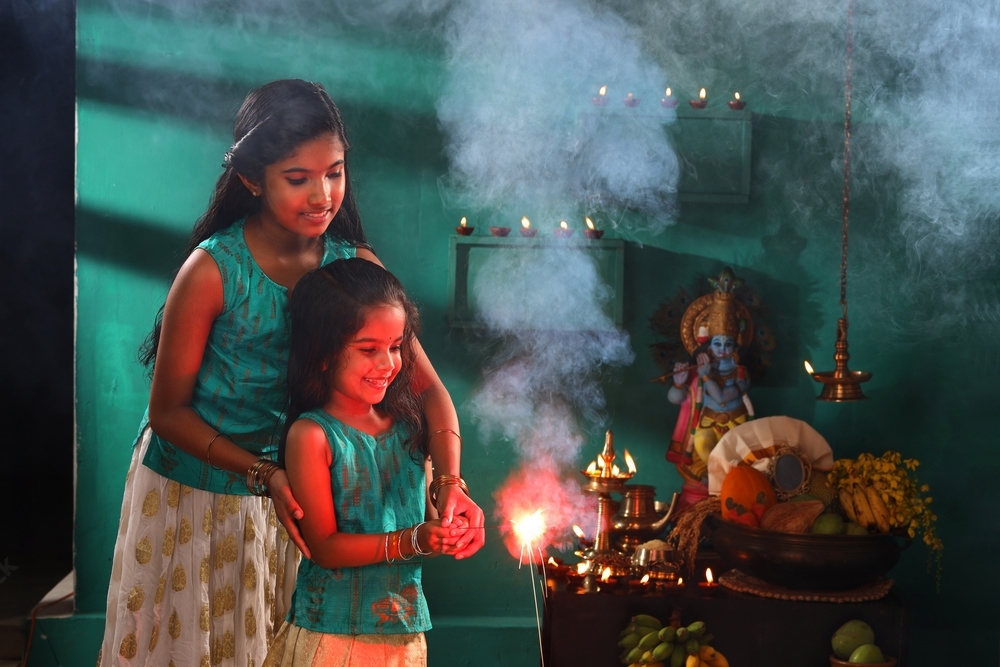
Landing around April 14th or 15th, it coincides with the spring equinox, a time when day and night find the perfect balance – just like the word “Vishu” itself translates to “equal.” This is a time for families to gather and celebrate together.
A First Look at Abundance: The Vishukani Display
Vishukani is the first act during Vishu and the heart of the celebration, a meticulously arranged display symbolizing prosperity for the year ahead.
On Vishu eve, women prepare the Vishukani by carefully laying out freshly harvested treasures like rice, Kanivellari (a local variety of cucumber), jackfruit, and coconuts alongside the vibrant yellow Kanikonna flower, a natural herald of Vishu’s arrival.
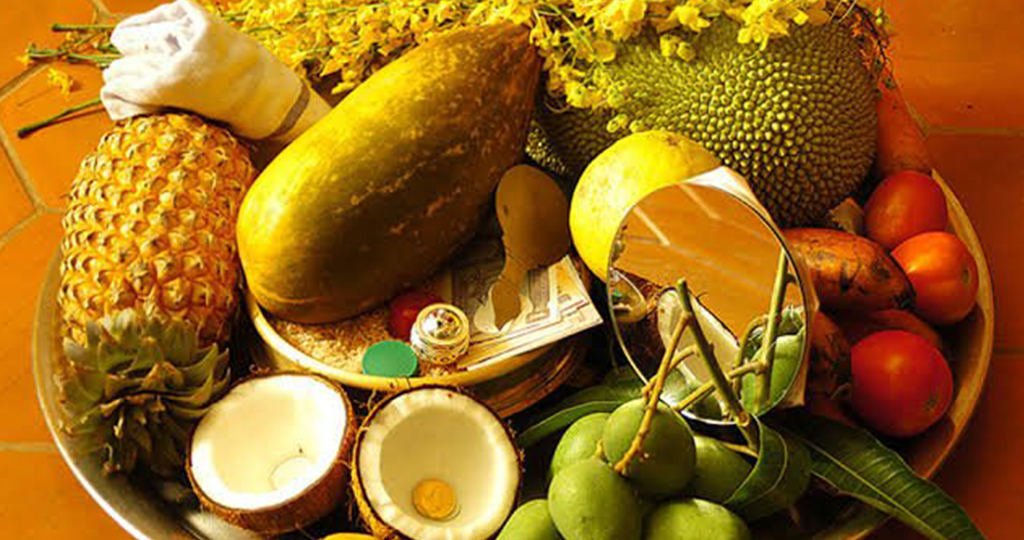
A Kannadi (mirror) is also included in the Vishukani allowing you to see your reflection alongside other items.
These offerings represent the farmers’ hard work and their hope for future abundance.
Early in the morning, an elder in the family lights a lamp. Then, with eyes closed, other family members are guided to witness the Vishukani for the very first time.
It’s believed that this initial sight sets the tone for the coming year, making the careful selection of items in the Vishukani especially important.
Following the unveiling, prayers are offered to Lord Vishnu, seeking blessings for a prosperous year ahead. The connection to Lord Vishnu is strong – seeing his image first thing on Vishu is believed to bring good fortune.
Celebrating Vishu with Vishu Vela
Vishu Vela is a special festival celebrated in Kerala’s farming villages during Vishu. During this time, villagers gather at the village temple to honor their village deity (mother goddess). They pray sincerely for a successful farming season ahead.
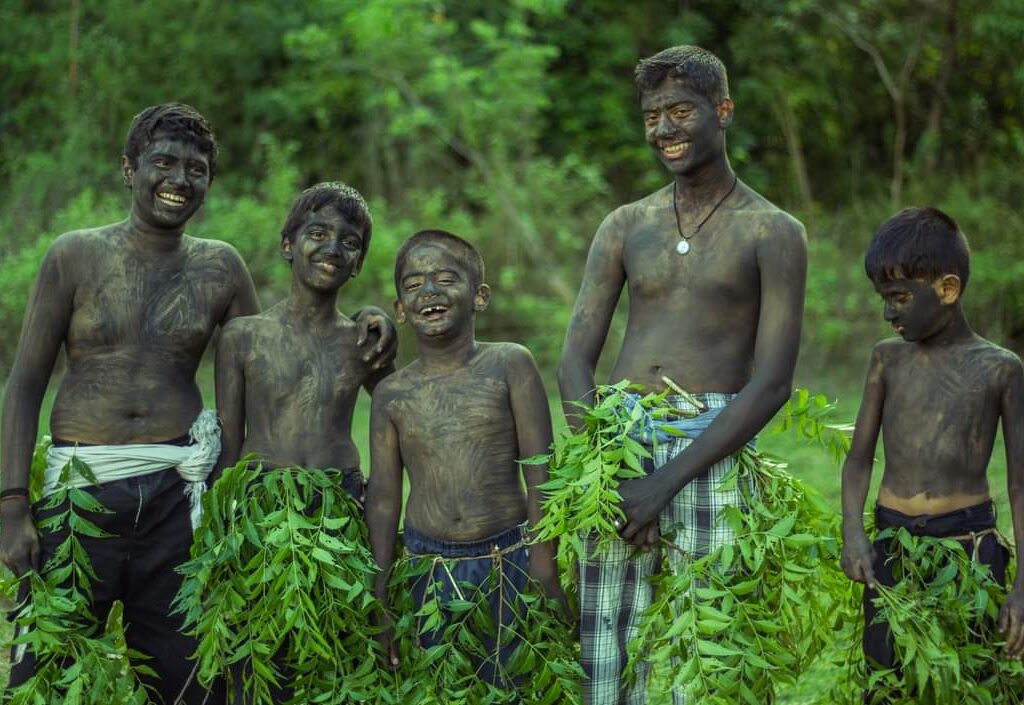
A key part of Vishu Vela is Karivesham, where villagers paint themselves black and walk through the village streets. They believe they are embodying the goddess’s blessings as they visit each home.
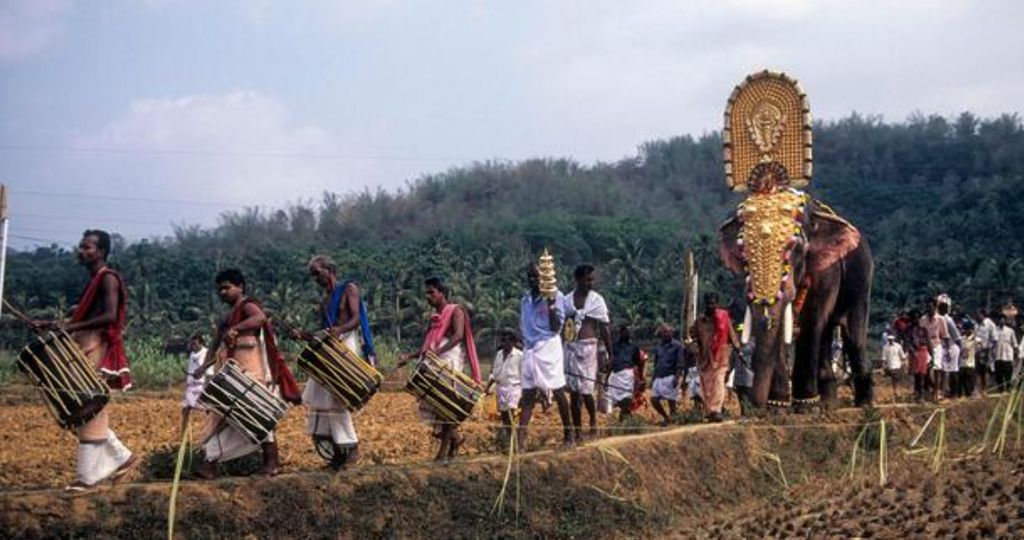
The event is accompanied by elephants and traditional music, creating a lively yet respectful atmosphere. After this solemn ceremony, everyone comes together for joyful celebrations.
A Celebration of Agriculture and hope
Vishu isn’t just a celebration in Kerala, it’s the official start button for the agricultural year. Farming is the lifeblood for many here, and traditionally, farmers relied on instinct and the sky for guidance.
Vishu marks spring’s arrival, and the rainy season is just around the corner. Spring, with its warm days and moist earth, is the perfect time to prepare the soil for planting seeds.
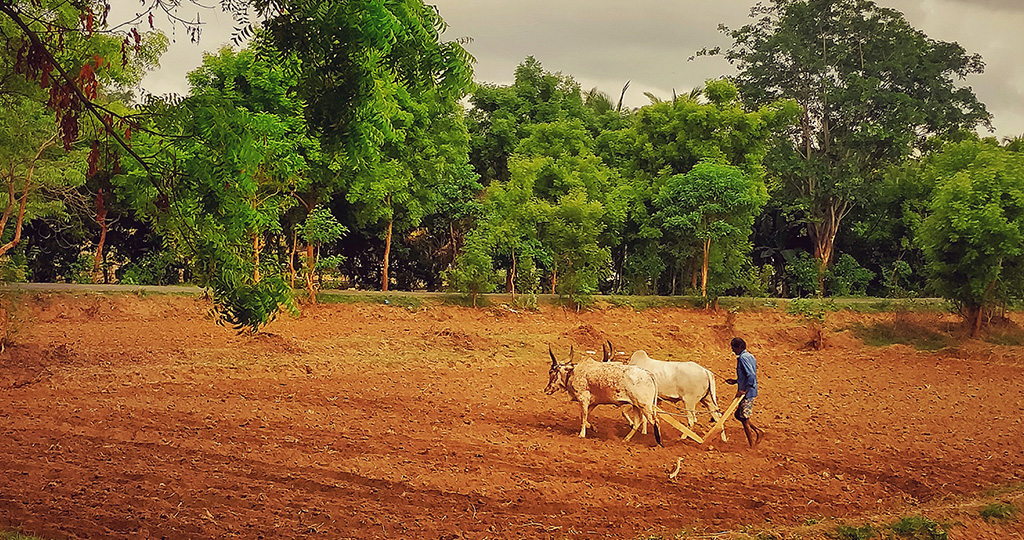
Vishu morning begins with festivities, but after the joyous traditions, it’s straight to the fields. Farmers get to work prepping the soil, a process called plowing, signifying the official start of cultivation.
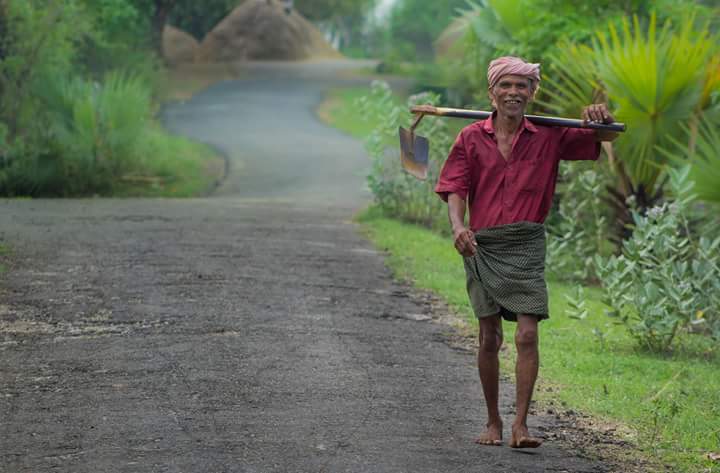
Vishu serves as a reminder that the previous agricultural year has concluded, marked by the completion of the harvest season. Therefore, the Vishukani display, featuring fresh crops and produce, symbolizes the abundance of the previous harvest and the promise of a fruitful year ahead.
What’s for Lunch at Vishu? Exploring the Festive Feast
Of course, no Kerala celebration is complete without a special meal. Vishu boasts its unique dish – Vishu Kanji, a warm and comforting porridge made with rice, coconut milk, and local varieties of pulses.
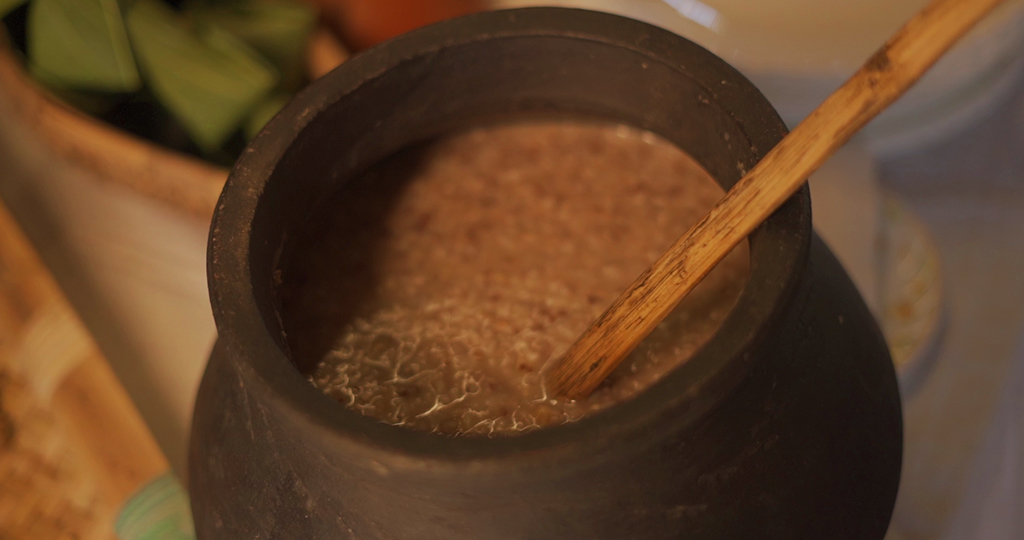
This hearty dish is often served alongside Puzhukk, a delicious side dish made of root vegetables like sweet potato and tapioca. Another side dish, Kondattam (rice crisp fries), is made from rice and sometimes vegetables and fried for a crispy complement to Vishu Kanji.
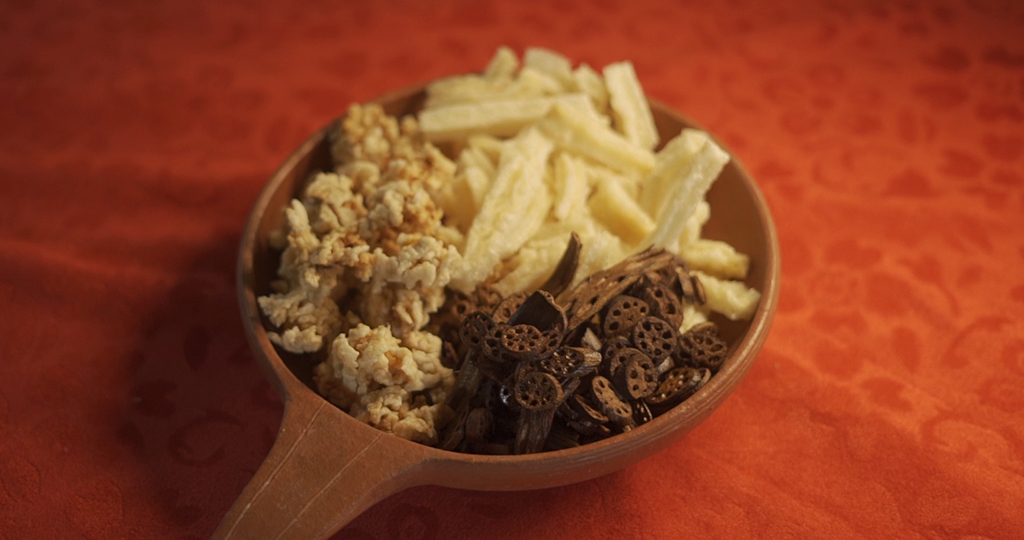
Interestingly, both Vishu Kanji and Puzhukk are frequently prepared using the very produce displayed in the Vishukani earlier that day. It’s a way for families to enjoy the fruits (and vegetables!) of their labor as part of the celebratory meal.
As you have heard, Vishu celebrates new beginnings, weaving tradition, family, and prosperity into a vibrant tapestry. It’s a reminder of nature’s bounty, family’s importance, and the hope for a bright future.
Vishu and similar Spring Festivals Across India
April bursts with celebrations across India! It’s not just Kerala that celebrates, the whole country comes alive. While some regions, like Kerala, mark the start of the farming year with vibrant festivals, others celebrate their traditional new year.
Get ready to explore this incredible mosaic of celebrations and discover the magic of spring festivals across India!
Just a stone’s throw from Kerala, across the border in Tamil Nadu, another vibrant celebration explodes onto the scene around the same time as Vishu – Puthandu, the Tamil New Year.
Puthandu: A Tamil Celebration of Beginnings
Homes transform in the days leading up to Puthandu. Doorways become adorned with intricate kolams; beautiful rice powder designs believed to bring prosperity. Vibrant flower decorations create a welcoming atmosphere that hints at the celebrations to come.
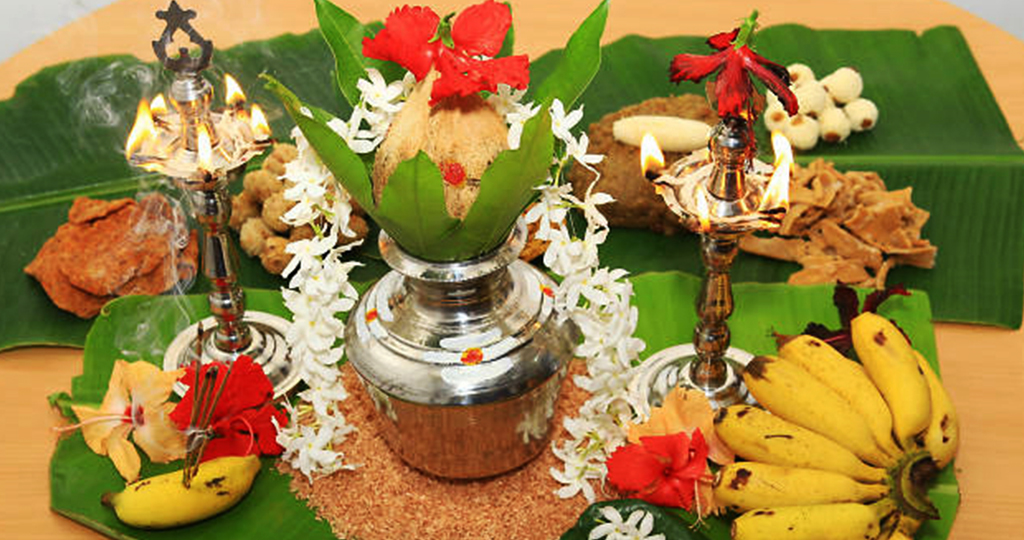
Puthandu is a time for joyous reunions. Families and friends gather for the “Arpudu” ceremony, the symbolic first ploughing of the ground. This ritual signifies the start of a new agricultural season, a promise of future bounty. Laughter fills the air as youngsters engage in the playful “Por Thenkai,” or coconut wars with their youthful energy.
The heart of the Puthandu feast is the unique dish “Mangai-Pachadi,” a flavorful medley of sweet, sour, salty, and bitter notes. This dish serves as a reminder that life is a mixture of experiences of every flavor and that we have to embrace them as they come
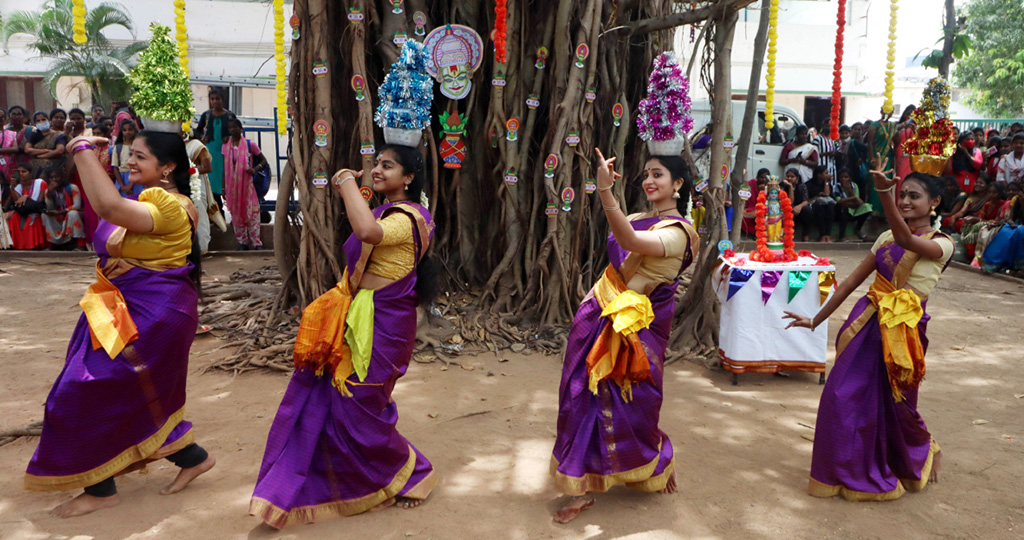
Puthandu is a time to look forward with hope, embracing the promise of a new year with loved ones by your side. The spirit of community and tradition creates a truly unforgettable celebration.
Bohag Bihu: A Festival Rooted in Assam’s Soul
Each April, Assam explodes with Bohag Bihu, the Assamese New Year. Bohag Bihu is more than just a celebration; it’s a way for farmers to express their feelings tied to the agricultural cycle.
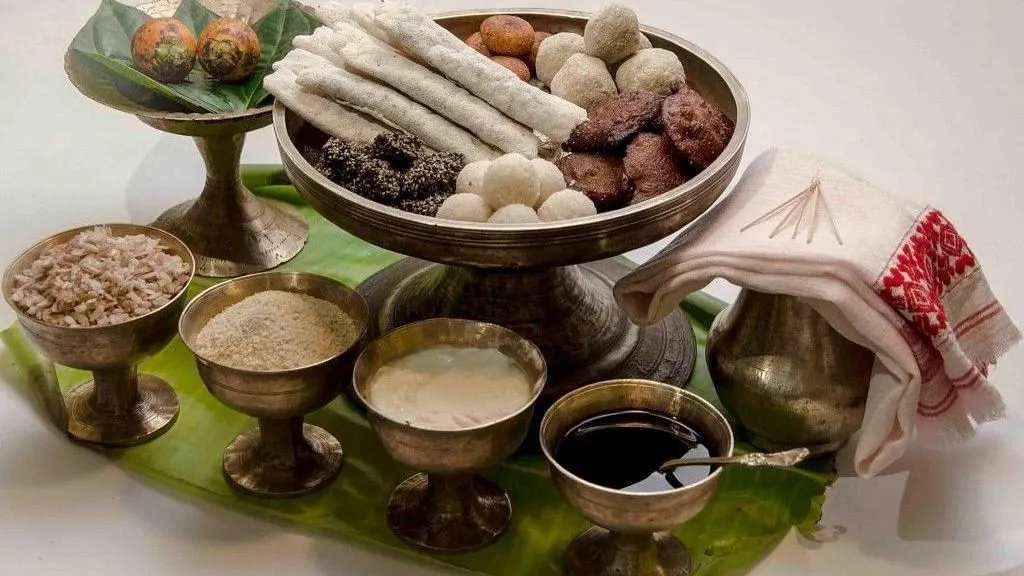
Bohag Bihu is the most important of the three Bihu festivals and marks the exciting start of the planting season, filled with hope for a bountiful harvest.
For seven days, Assam comes alive. Folk songs called Bihu Geet fill the air, people dressed in colorful costumes perform vibrant Bihu dances, and the rhythmic beats of drums and flutes echo along the Brahmaputra River.
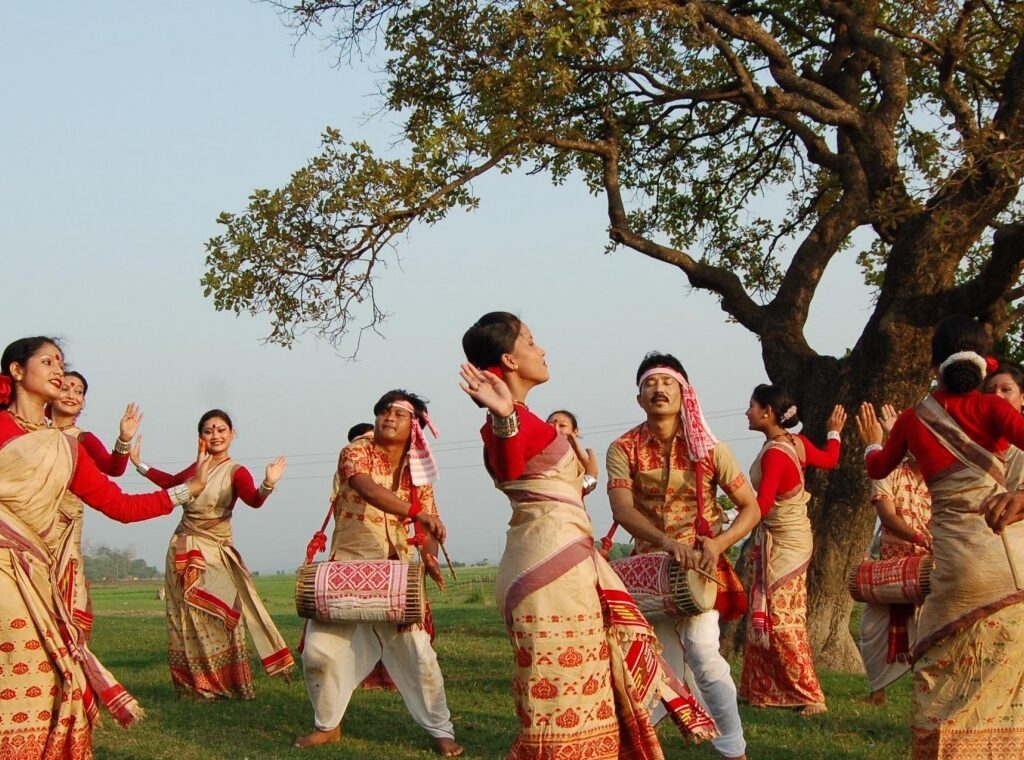
Bihu goes beyond a celebration; it strengthens communities with a deep connection to the land. People from all walks of life come together, wearing their best clothes, to sing, dance, and feast. The joyful atmosphere vibrates with the collective energy of a new beginning and the promise of future prosperity.
Baisakhi: Punjab’s Vibrant Harvest Festival
Baisakhi, marking both spring’s arrival and the Punjabi harvest, fills hearts with gratitude. Farmers, dressed in their best clothes, visit temples and Gurdwaras to express thanks for nature’s bounty.
For Sikhs, Baisakhi holds a deeper meaning. It commemorates the founding of the Khalsa Panth community, adding a layer of reverence to the festivities.
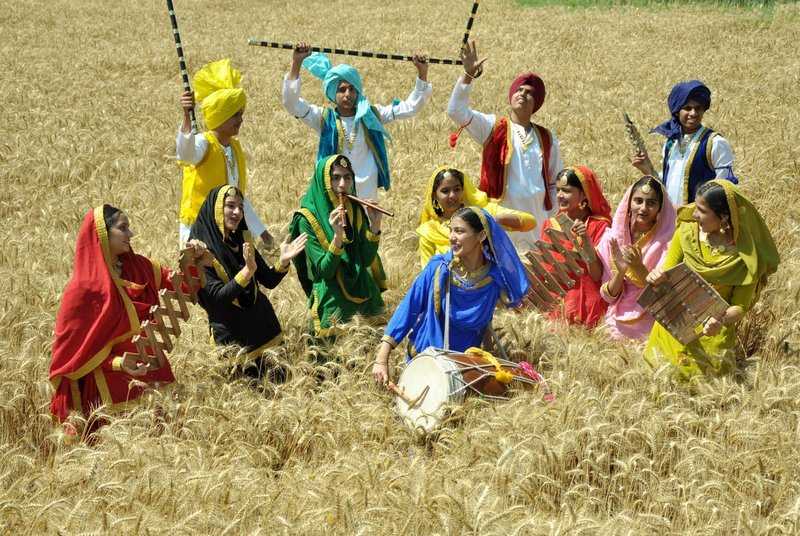
The celebratory spirit explodes in vibrant fairs with music and dance. The rhythmic beats of Bhangra and Gidda, traditional Punjabi dances, fill the air. People come together to share stories, laughter, and delicious food.
Baisakhi is a feast for the senses, offering a variety of dishes from creamy Kadhi to sweet Meethe Peele Chawal, all washed down with refreshing Lassi. Baisakhi brings everyone together to celebrate prosperity and honor their past.
Pohela Boishakh: A Bengali Spring Awakening
Each Bengali year begins with Pohela Boishakh, a joyous celebration that arrives in mid-April. Marking the Bengali New Year in a joyous celebration that unites people of all religions and social backgrounds.
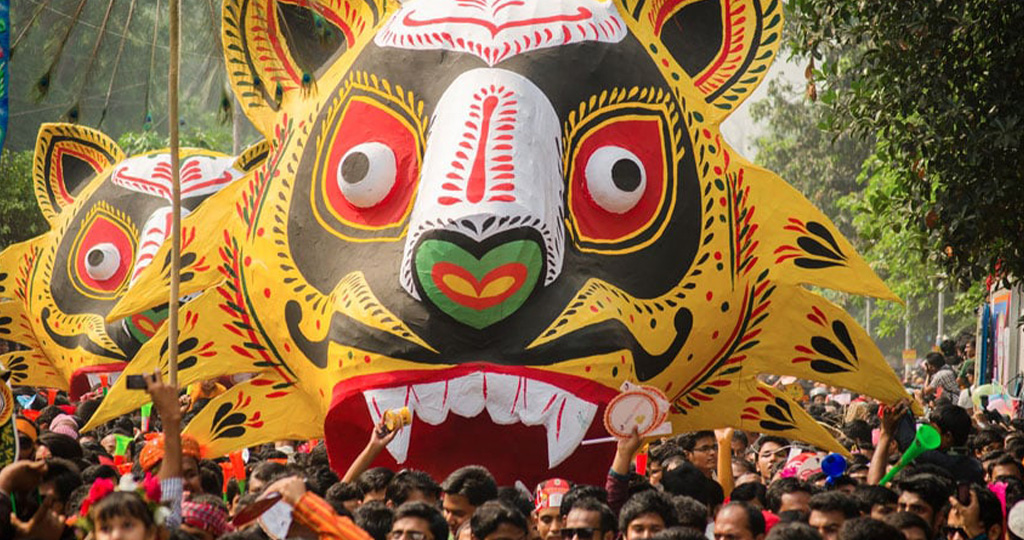
This festive tradition has practical roots; established by Mughal emperor Akbar to address a mismatch between the tax calendar and harvest season, Pohela Boishakh became a way to mark the new solar year.
Today, Pohela Boishakh explodes with alluring colors and merriment. People dress in their finest clothes, enjoying delicious Bengali food and participating in the Halkhata ritual.
This ritual involves businesses symbolically turning the page by closing old accounts and opening new ones for the coming year.
Beyond the feasting and fun, Pohela Boishakh is a time for Bengalis to reconnect with loved ones, celebrate the arrival of the harvest season, and strengthen their cultural heritage by sharing stories and songs.
Vishu and Spring Festivals Across Southeast Asia
The excitement doesn’t stop! Across Southeast Asia, the same day explodes with amazing festivals, each a unique celebration of new beginnings and bountiful harvests.
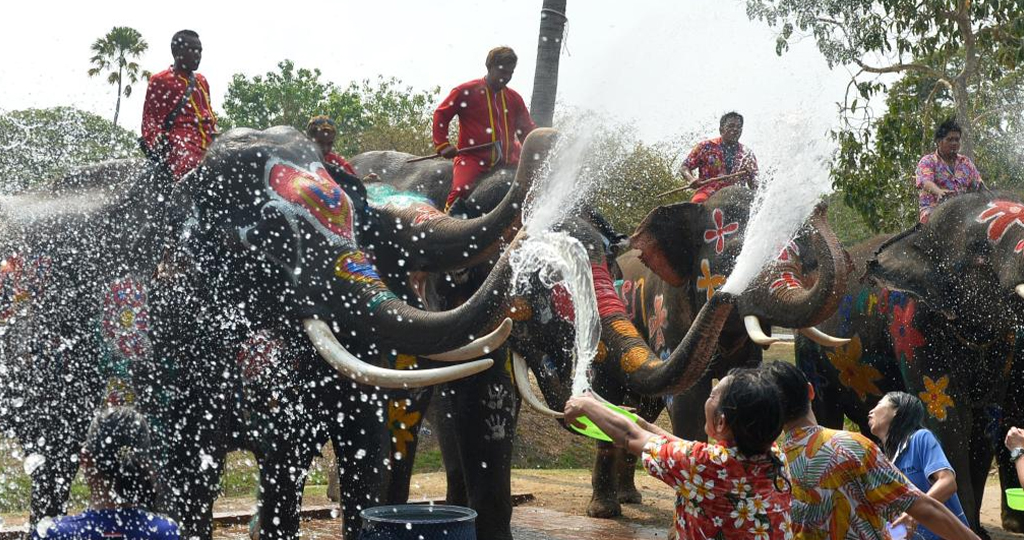
Imagine playful water fights, blessings from monks, and traditions, unlike anything you’ve ever seen before! Get ready to discover the energy and joy of these festivals!
Songkran Festival of Thailand
Celebrate the arrival of a new year in Thailand with Songkran, a vibrant festival happening around the same time as Vishu in India. This three-day celebration uniquely blends ancient and modern traditions.
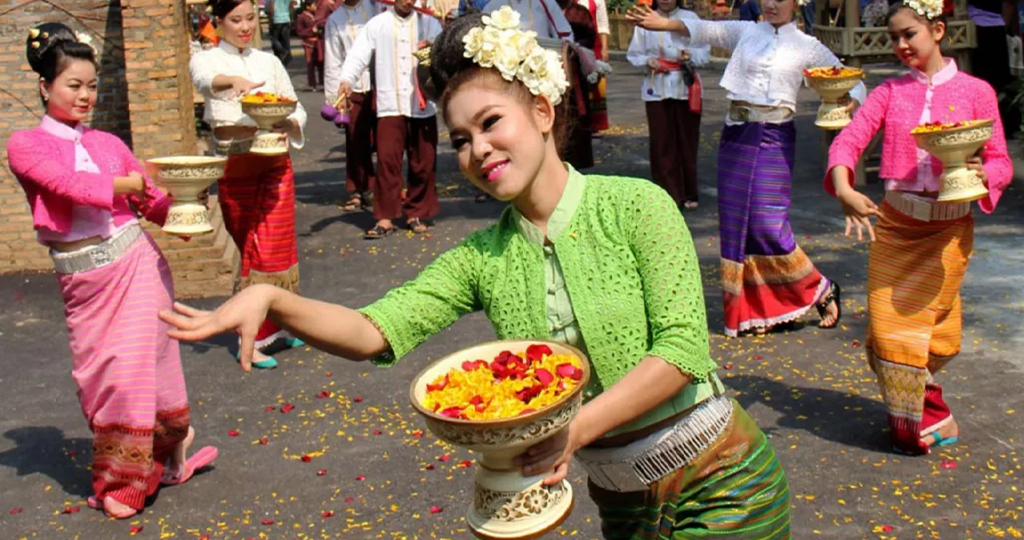
Songkran has roots in Buddhist beliefs. It is a time to show respect to elders, visit temples, and earn merit through good deeds.
These traditional elements mix with a playful highlight – water fights! Super soakers and music transform Thailand’s streets into giant water parties.
Food is another important part of Songkran. Cool off with Khao Chae, a refreshing rice dish soaked in jasmine-scented iced water. If you prefer something spicy, try Som Tum, a green papaya salad. And to finish on a sweet note, don’t miss sticky rice with mango, a classic Thai dessert.
Songkran offers an unforgettable cultural adventure. Experience vibrant traditions, delicious food, and a playful water battle!
The Joy of Thingyan in Mynamar
Myanmar bursts with color and laughter for four days during Thingyan, their energetic New Year celebration. Water fights erupt in the streets, washing away the old year in a symbolic and joyful cleansing. Vibrant parades add to the festive atmosphere.
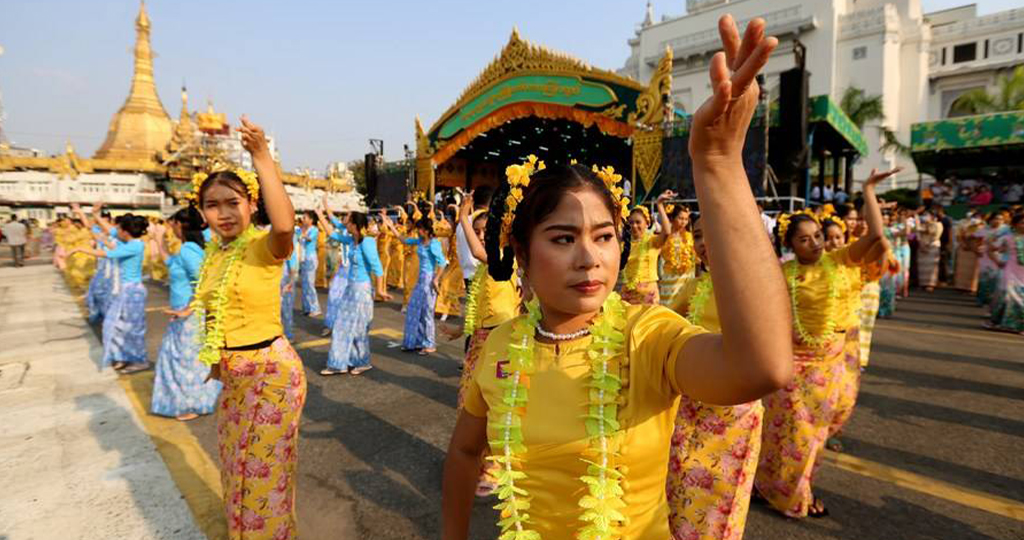
The mood shifts on the fifth day, the official New Year. Playful energy gives way to reverence as people visit temples dressed in their finest clothes. Offering alms to monks becomes a key part of this holy day.
More than celebrating Thingyan is also a time for families to strengthen bonds. Younger generations honor elders, reflecting the importance of family. Families come together to pray, and the blooming Thingyan Flowers symbolize new beginnings.
Thingyan offers a compelling glimpse into Burmese culture, highlighting their traditions and deep respect for their heritage.
Laos Welcomes New Year with Pi Mai Festivities
Laos celebrates Pi Mai, their vibrant New Year festival, in mid-April. Marking the end of the dry season and the start of the rainy season, Pi Mai signifies renewal and letting go of the past year.

Traditions like cleaning homes and temples, and offering food to monks, set the stage for forgiveness and fresh beginnings. Families gather, dressed in their best clothes, to share delicious meals and exchange gifts.
A key tradition is the water blessing. People pour scented water with flower petals over statues of Buddha, symbolically washing away the past year’s troubles and entering the New Year fresh.
The water that runs off the statues is then collected and used to bless family members, a gesture of love and well-being.
Pi Mai serves as a powerful reminder of the cyclical nature of life, where endings pave the way for new beginnings.
Khmer New Year: Celebration in Cambodia
Khmer New Year kicks off in Cambodia with a burst of festivities, a 3-day celebration packed with tradition and family time in mid-April.
On the first day, Moha Songkran focuses on preparation. People clean their homes and themselves, welcoming a new year with a fresh start in both practical and spiritual ways.
Wanabat, the “Day of Giving,” shifts the focus to family. People show respect and appreciation to elders by offering gifts and receiving blessings from monks.
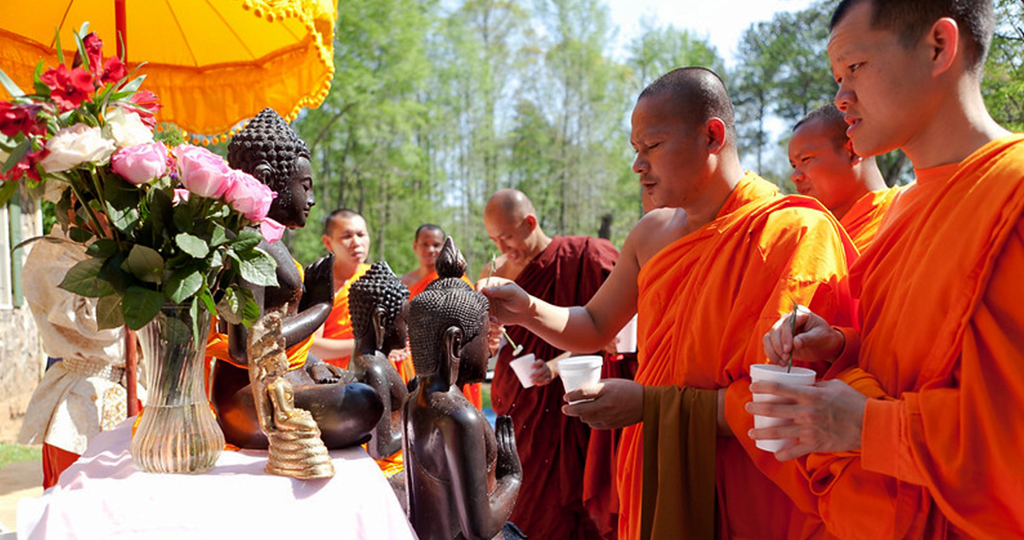
Finally, Tanai Lieang Saka, or “New Beginning,” arrives. People gather to cleanse themselves with water, symbolically washing away the troubles of the past year. It’s a joyous farewell to the old and a hopeful embrace of the new year.
Everywhere you look during Khmer New Year, families reunite, laughter fills the air, and traditional performances light up the streets.
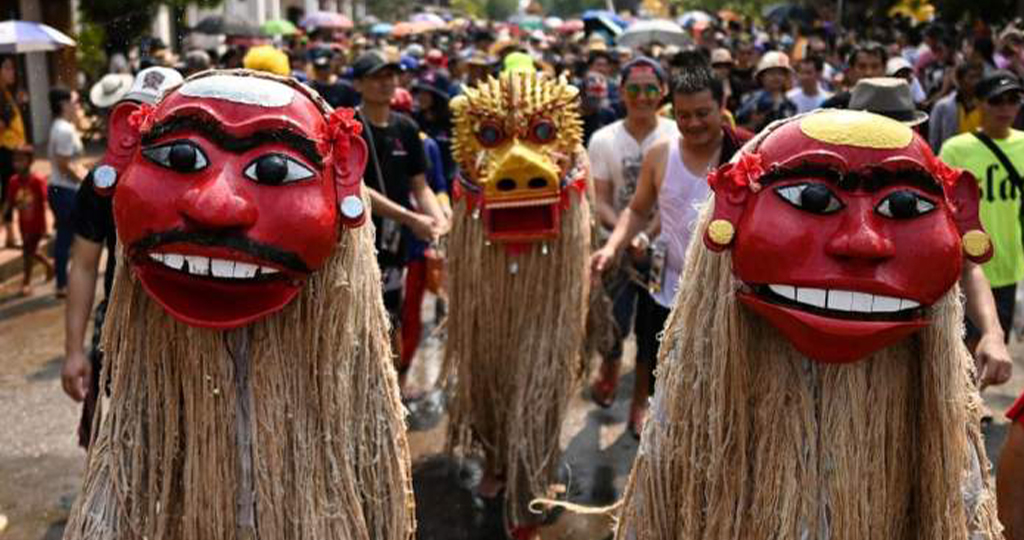
This celebration offers a chance to experience the culture and warm spirit of Cambodia. The celebration embodies the power of fresh beginnings and the promise of a year filled with hope.
April bursts with color, flavor, and community celebrations across India and Southeast Asia.
From the warm family gatherings of Vishu to the playful water fights of Songkran, each festival offers a unique glimpse into the rich culture of their region.

Whether you’re drawn to the delicious food, the lively music, or the heartwarming traditions, these spring celebrations promise an unforgettable experience.
So, the next time April arrives, consider it an invitation to explore the exciting festivals bursting forth across this part of the world. You might just discover a new favorite tradition to add to your calendar.
Planning to travel Kerala during a festival season? Click here.
![logocolor[1]](https://mokshastories.com/wp-content/uploads/2023/06/logocolor1.png)
